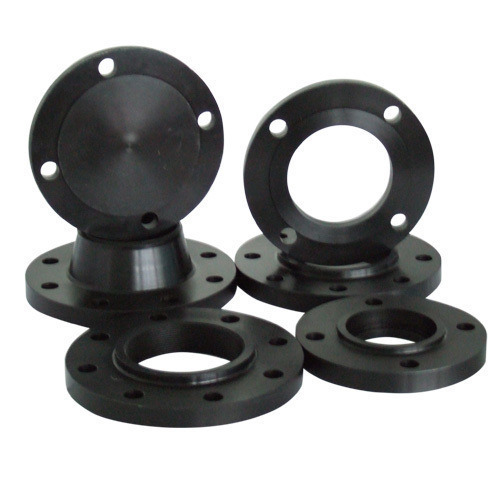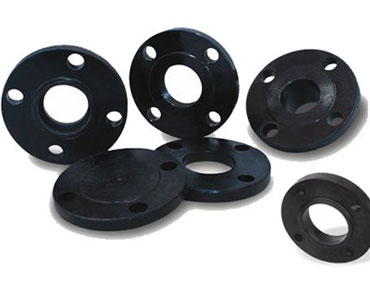Expansion Joints
A rubber expansion joint is a flexible connector to absorb noise, shock, vibration, and physical and thermal energy. Made of natural or synthetic elastomers it may be internally reinforced with fabrics and metal for strength and pressure resistance whilst metal reinforcement may be used externally for movement control.
Why Use a Rubber Expansion Joint?
Rubber expansion joints offer flexibility allowing concurrent movements, isolation of vibration, reduction of noise, resistance to abrasion, and chemical erosion within fluid systems.
Here are the key benefits of rubber expansion joints:
Movement Absorption
Rubber joints can absorb greater movements when compared to similar length metal expansion joints. Equipment such as pumps, compressors, and piping can move out of alignment due to the wear and settling of their supporting structures. Rubber expansion joints can routinely manage the resulting lateral, torsional, and angular movements whilst strategically located rubber expansion joints can mitigate thermal expansion and contraction movements. Metal joints typically have a lower lateral movement capability and the allowance for movement offered by rubber expansion joints has positive benefits in extending system life and maintenance intervals.
Vibration Reduction
Reducing vibration is important to prevent unbalanced forces from building up to a level where they can damage a fluid system. Rubber pipe and expansion joints dampen these disturbances and provide resistance against shock stress from hydraulic surges and water hammer.
Sound Reduction
As systems age and wear, imbalances occur which cause unwanted noise. Rubber expansion joints dampen sound transmission with their rubber to steel interface. When compared to full metal joints, thick-walled rubber expansion joints offer a much higher reduction of sound transmission.
Corrosion, Abrasion, and Erosion Resistance
Metal joints are typically thin-wall elements, having a wall thickness anywhere between 0.15mm to 2mm. Rubber joints are thicker, from 12mm to over 25mm. Metal expansion joints are susceptible to chemical erosion and abrasion whereas rubber joints are resistant to abrasion and erosion.
A wide variety of natural, synthetic, and special purpose elastomers and fabrics are available to create high-performance rubber expansion joints to meet challenging operating conditions. Special polymers resist chemicals, oil, sunlight, acid fumes, ozone, and external coatings that can be added for further protection.
Expansion joints may use PTFE (polytetrafluoroethylene) and FEP (fluoroethylene propylene) liners within the joint body. When fluoroplastics are used in rubber expansion joints this results in better thermal stability, low friction, and resistance to corrosive fluids, chemicals, abrasion, and erosion.
Fatigue Resistance
The ability to flex and absorb gives rubber expansion joints a distinct advantage over metal joints since natural and synthetic elastomers are not subject to fatigue breakdown, loss of ductility, or electrolytic reaction. This results in a long-lasting expansion joint.
Ease of Installation
Rubber expansion joints are light in weight compared to metal expansion joints, making them easy to handle and install. The vulcanized rubber and fabric flanges of elastomeric expansion joints are integrated and therefore do not require additional gaskets which also eliminates the need for ongoing gasket maintenance checking. Additionally, elastomeric expansion joints can equalize the uneven surfaces of the pipe flange to provide a gas-tight seal.
Tysseer trading
Our Suppliers
Kofco – Flanges
Origin: Taiwan
- Single Sphere Connection with Flange
- Twin – Sphere Connection with Union Thread
ArmFlex – Flexible Rubber Joint
Origin: Taiwan
- Single Sphere Connection with Flange
- Twin – Sphere Connection with Union Thread
Tysseer trading
Rubber Joint



Tysseer trading
Here are examples of applications that utilize rubber expansion joints:
- Air conditioning
- Cement production
- Chemical production
- Compressors
- Fans
- Heating and ventilating
- Metal production
- Paper and pulp
- Power generation
- Pumps
- Stormwater
- Water pipes
- Refineries
- Desalination
Flanges



A flange is a method of connecting pipes, valves, pumps, and other equipment to form a piping system. It also provides easy access for cleaning, inspection, or modification. Flanges are usually welded or screwed. Flanged joints are made by bolting together two flanges with a gasket between them to provide a seal.
The key types of flanges are the welding neck, long welding neck, slip-on, socket weld, lap joint, threaded and blind flanges.
You need to find the outer diameter, the inner diameter, the number of bolt holes, bolt hole diameter, and the bolt circle diameter. Bolt circle diameter (B.C.) is one of the most important measurements to make when identifying a flange.


